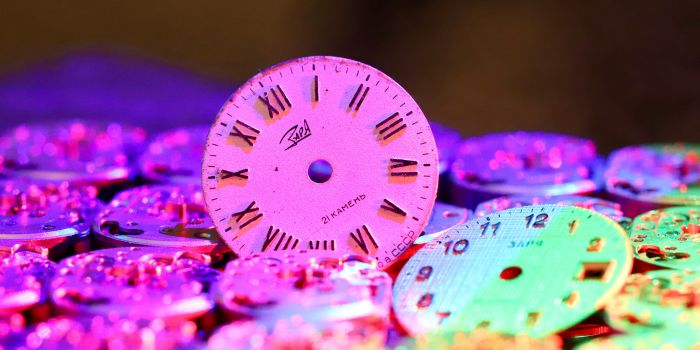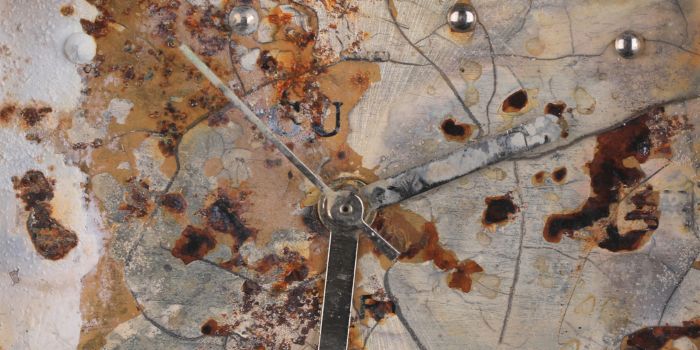A watch dial or a “watch face” is an interior part of a watch that displays the time by using fixed numbers (printed, embedded, or adhered) and moving hands.
Typically, black or white is the prominent watch dial color that offers the watch its practicality. The black, white, or luminous hands make it easier to read the time even in low light and poor visibility conditions.
However, with changing trends, the watch dials have been clumsily designed, crowded, and beautified with much more information such as day, date, month, and more. This information is often added to the main watch dial by adding small secondary dials, such as in chronograph watches.
Then there is also a sunray dial watch. This is a great alternative for those who want to have a sportier look and casual appeal that’s most of the time available in digital watches and modern smartwatches.
What material is it made of?
Watch dials were traditionally made from metal just to look simple and serve their basic purpose. But today, the dials of most exclusive watches are designed attractively and are made with vitreous enamel, a type of glass that is composed of glass powder extracted from silica.
Enamel paint and various types of other chemicals are also being used on modern watch dials to make them look colorful and attractive. These dials can last forever but with time they become and may lose their shine. To maintain their appearance, regular cleaning, and careful handling are essential.
Why Clean a Watch Dial?
Many times watch dials are made up of a metal alloy that may contain iron and can rust if there is high oxygen and moisture content in the air.
The material of watch dials may also get yellowish (showing signs of wear and tear) with time due to extreme weather conditions like temperature and humidity.
Especially if it’s a vintage pocket watch or a valuable antique piece like a Seiko kinetic watch, you cannot afford to leave the watch dial as it is. It, therefore, needs a deep cleaning to restore its luster and beauty.
Cleaning an interior watch dial and other parts is also important in case you have dropped down your watch, and it carries broken glass pieces or dust particles inside. There may also be numbers that have fallen off, and you may need to get them repaired and cleaned as soon as possible.
Cleaning an Interior Watch Dial
Before we proceed with different ways to clean a watch dial, let me tell you that cleaning an exterior watch face is different than cleaning an interior watch dial.
Unlike exterior watch faces, interior watch dials are delicate and can be a hassle to remove from your watch. Unless you are an expert in watch repair, you should not try to remove and clean them at home. Instead, go to a professional watch repair shop and get it removed and cleaned to avoid any damage.
If you are really passionate about DIY projects and are knowledgeable about watch repair, you can remove and clean a watch dial at home by following these simple steps.
- First of all, remove the hands from the watch dial.
- Use a watch dust blower to blow off any dust or debris on the surface.
- Then use a sharpened piece of peg wood or a toothpick to remove any left-out dust particles on the surface or broken pieces of glass (if any).
- You may use Rodico cleaning putty or something similar that can help remove the other residue (fingerprints, stains, and debris) that has been adhered to the dial.
If your old watch dial is very dirty, use a soft dial brush with a mild detergent to lightly clean the surface. This will help in removing the dirt and grime along with any yellow spots deposited on the dial with time.
If you prefer to use any kind of liquid solution or detergent for cleaning/restoring your vintage watch dial, use it with extreme caution. Also, make sure that you dry the dial immediately after the cleaning as the left-out liquid or moisture can damage the dial surface or its paint lacquer.
Remember that if your watch dial lacquer has been damaged, there is nothing much you can do to restore it. Re-lacquering the dials can be tough in most cases; you may need to go to a watch dealer or a repair shop to check whether this can be done or not.
Cleaning and Polishing an Exterior Watch Face
Cleaning an exterior watch face and bands should be done once a week to clean and remove the fingerprints and smudges from the crystal or glass. It’s a pretty much easier task compared to cleaning an interior watch dial.
- Make a soap-water mixture for cleaning – do not use any other kind of chemical substance or bleach as it may destroy your watch
- Polish the face of your watch using a soft-bristled toothbrush, a chamois cloth, or a polishing or lint-free cloth – do not rub too hard as it may scratch the surface.
- Now use a Q-tip or a toothpick to clean the dust, grime, and debris that may be deposited in areas between the watch face and the watch band.
- After you have cleaned up your watch face, use a clean, lint-free cloth to wipe down and remove any excess water or soap from the watch and watchband.
If you wish to polish your watch glass, inspect the scratches on it carefully under bright light. For a glass crystal watch face, rub a bit of toothpaste on it. After a few minutes, clean it gently using a soft cloth.
If your watch face is of plastic or acrylic, the process differs slightly. You can use a fine-grade abrasive polish specifically designed for plastic surfaces. Apply a small amount of polish to a soft cloth and rub it gently in circular motions over the scratched areas.
Be careful not to apply too much pressure, as this can cause further damage. After polishing, wipe the surface clean with a microfiber cloth to remove any residue.
Can You Clean a Dial with a Watch Cleaning Machine?
An automatic watch cleaning machine like an ultrasonic watch cleaner can be a good way to clean watch parts including the dials.
However, do remember that it uses an ultrasonic cleaning liquid and high-frequency ultrasonic sound waves to develop the cavitation and cleaning action. Since these high-frequency waves may damage the paint/polish on the delicate watch dial, it is good to avoid cleaning your watch dial in a watch cleaning machine.
Also, if your watch dial comes with any chips, loose pieces, or numbers that can come off easily, do not clean them in an ultrasonic cleaning device.
Watch dials that do not have any paint or polish (like genuine baked-on enameled dials or old pocket watch dials) can however be washed in an ultrasonic cleaner. Since these do not have any polished coating that can be damaged, they get cleaned up in an ultrasonic cleaner without getting damaged.
When using an ultrasonic watch cleaner device for cleaning the watch dials, make sure that you do not leave them in a bath for too long, especially if you have a large, powerful tank for commercial purposes.
Cleaning vs. Replacement – When Do You Need to Replace a Watch Dial?
Remember that cleaning and replacing a dial requires expertise to ensure everything is properly aligned and functioning. If it’s your precious piece that holds sentimental value you may get it cleaned by a skilled watchmaker. But you might need to replace your watch dial in these situations:
Visible cracks, chips, or deep scratches: If the color of the dial has faded over time or the finish looks worn, it can diminish the watch’s appeal. In rare cases, a faulty dial might also affect the timekeeping or other elements like the date window. These are not only unsightly but can also affect the movement.
A replacement can fix these issues and improve the performance of your watch. It also helps to keep your watch looking sharp while restoring its legibility and functionality.
Malfunctioning hands or water damage: If the watch hands are sticking, broken, or misaligned, the issue might stem from the dial. A new dial ensures the hands can be properly installed and function smoothly. Also, if water has seeped inside and caused the dial to warp, stain, or show signs of moisture damage, replacing it is essential to prevent further internal harm.
Personalization or style change: Sometimes, you simply want to change the look of your watch. If you’re looking to customize your timepiece, replacing the dial can give it a whole new personality.
The conclusion
It’s pretty obvious that your watch dial may rarely need a deep cleaning. But when required, it should be done with utmost care so that you love wearing your valuable watch forever. When seeking a replacement dial, make sure to choose one that matches the style and specifications of your watch to preserve its overall look and performance.
You can replace your watch dial anytime you want, provided it carries the replaceable parts and can be repaired, but attempting to replace the dials yourself without proper knowledge could cause damage to other delicate internal components, affecting its functionality.
A professional watchmaker or technician has the experience and tools necessary to perform the repair or replacement correctly, ensuring that the watch remains in good working condition. Additionally, they can inspect the watch for any other issues that may need attention, such as movement damage or water resistance.



